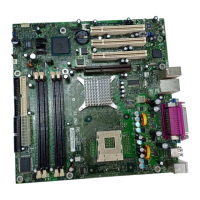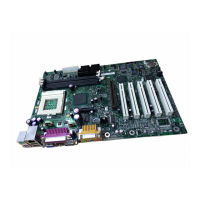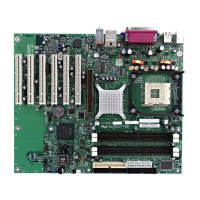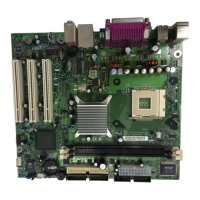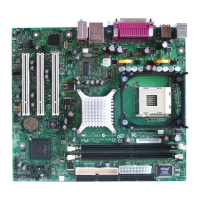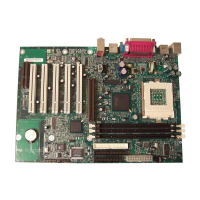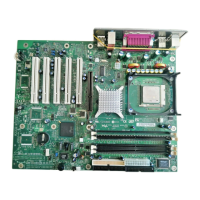Product Description
21
1.5.3 RDRAM Memory Configuration
When installing memory, note the following:
• The four RIMM sockets are grouped into two banks:
Bank 0 (labeled on the board as RIMM1 and RIMM2)
Bank 1 (labeled on the board as RIMM3 and RIMM4)
• Bank 0 must be populated first ensuring that the RDRAM installed in RIMM1 and RIMM2 is
identical in speed, size, and density. For example, the minimum system configuration would
use two 64 MB RIMM modules of PC600 or PC800 RDRAM.
• If the desired memory configuration has been achieved by populating Bank 0, then Bank 1
should be filled with two Continuity RIMMs.
• If memory is to be installed in Bank 1, the RIMM modules installed in RIMM3 and RIMM4
must be identical in size and density to each other, and match the speed of the RIMM modules
in Bank 0. The RIMM modules do not, however, need to match those in Bank 0 in size and
density. For example, if Bank 0 has two 128 MB RIMMs of PC800 RDRAM, Bank 1 would
require PC800 RDRAM also, however, any other supported RIMM modules such as 64 MB or
192 MB could be used.
• If ECC functionality is required, all installed RIMM modules must be ECC-compliant
Table 5 gives examples of RDRAM component density for various RIMM modules. Component
density (counts) can be identified on the RIMM label.
Table 5. Supported Memory Configurations
Rambus
Technology
Capacity with
4 DRAM
Components
per RIMM
Capacity with
6 DRAM
Components
per RIMM
Capacity with
8 DRAM
Components
per RIMM
Capacity with
12 DRAM
Components
per RIMM
Capacity with
16 DRAM
Components
per RIMM
128/144 Mbit 64 MB 96 MB 128 MB 192 MB 256 MB
256/288 Mbit 128 MB 192 MB 256 MB 384 MB 512 MB
